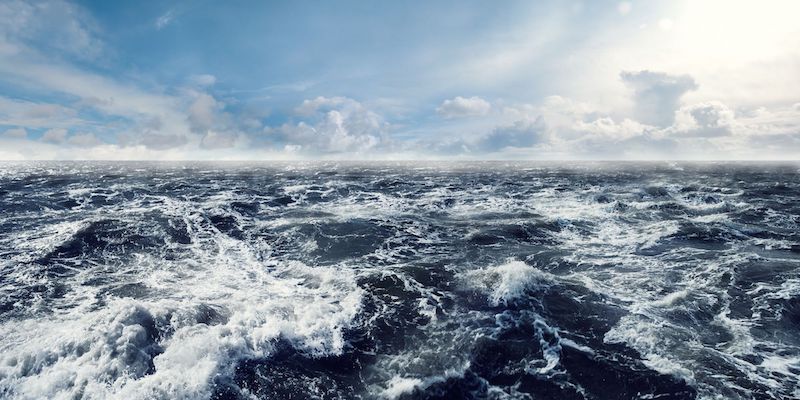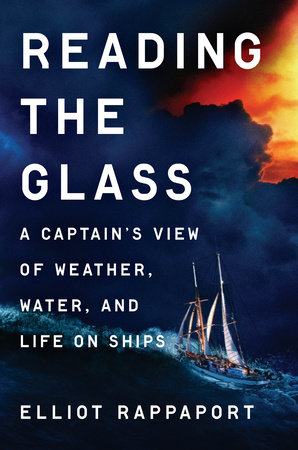
Mariners step away from the daily exigencies of weather and into the world of climate when they lay out plans for future voyages. How challenging might one expect the sailing conditions to be, on a given ocean at a certain time of year? Will the winds be favorable? And how likely is it that a hurricane will come along and turn a carefully laid plan on end?
Much of this information is embedded in a fascinating publication called the pilot chart—a bundled sheaf of pages showing, month by month, the historical trends of wind and storms for each ocean. You don’t navigate on these charts, but their distinct iconography will tell you what your ship might expect once the harbor is left astern.
The father of the pilot chart was an American named Matthew Fontaine Maury, a lieutenant appointed in 1842 to run the US Navy’s nascent Depot of Charts and Instruments. Injured in a stagecoach accident and unable to sail, Maury threw his formidable energy into building a record of winds and currents for the world’s oceans—a sailor’s atlas for passage planning, built with years of data taken from ships’ logs.
The ship captains of California’s gold rush used Maury’s work to plan their routes and were rewarded with greatly improved results: By 1855 the average time for a sailing voyage from New York to San Francisco had shrunk from 187 to 136 days. A record run of 89 days, set by the clipper Flying Cloud in 1854, would stand until 1989.
My old friend and shipmate Dr. Kevin Wood was a researcher for many years at the NOAA Pacific Marine Environmental Laboratory in Seattle, where as a kind of digital heir to Matthew Fontaine Maury he spent long hours preparing old ships’ logs for reanalysis—a process whereby modern images of past weather events are made by feeding antique data into the latest computer forecast models. It is a climate time machine. Imagine a set of digital graphics for the 1900 Galveston hurricane or the Thames flood of 1928, both now free for viewing on NOAA’s immense website.
I sailed with Kevin years ago on a tall ship voyage to the Caribbean after a long summer spent in the loud squalor of a Maine shipyard. Come October we escaped, standing our watches on what I now understand was a routine fall passage to the islands: The long initial nights of seasickness and equipment breakdowns. A gale, the ship adrift in driving rain and then careening off to the south as the cold front blew past us. One hurricane scare, calms east of Bermuda, and at last the trade winds, their warm exhalations driving us along for days on end, suffering forgotten.
A nineteenth- century navigator gifted with GPS and a diesel engine might well have enjoyed a better outcome.In graduate school Kevin dug deeply into logbooks left by the slow parade of vessels that had wandered into the trackless maze of Canada’s Arctic waterways during the Victorian era, engaged in a long and fruitless search for a Northwest Passage to the Orient. In the most famous of these doomed adventures, a commander named John Franklin departed from Greenland in the summer of 1845 with two ships and the full wind of England’s mania in his sails.
His vessels, the Erebus and the Terror, were purpose-built for polar exploration, equipped with iron armor, retractable rudders, and steam engines—the nineteenth-century equivalent of warp drive. Franklin and his fleet sailed off and disappeared utterly from view, leaving a mystery that would galvanize exploration for much of the remaining century.
The first clue to Franklin’s fate came in 1854, when a Scottish explorer named John Rae met a party of Inuit hunters deep in what today is the indigenous Canadian territory of Nunavut. The hunters told Rae of a winter four years previously when they’d come upon a group of about forty starving Englishmen blundering across the snow. The leader of this desperate crew explained that they were refugees from a thwarted naval expedition. Their ships had been stranded by the ice, and they were headed south in the hope of finding game to hunt.
The natives, understanding the realities of the food supply in that bitter landscape, no doubt nodded politely and gave the qallunaat a wide berth. When the same hunters passed that way again the following spring, they saw that the doomed whites had not gotten much farther. Amid the bodies were signs that some had taken to the desperate last resort of cannibalism in their final days. And along with the bones were the items that the lost men had felt essential to carry on their way—ebony pencil cases, gold pocket watches, and embossed English silverware.
By the time the mystery of Sir John was fully unraveled, a series of grueling explorations had proven that it was at least theoretically possible, if not well advised, to cross north of Canada by water. It was not until 1906 that the Norwegian Roald Amundsen actually did so, in a small motor-sloop called the Gjøa. It took him three years, a triumphant epic that was as much about winter camping as navigation.
As a climate researcher, Kevin Wood was curious to know whether the travails of these driven souls could—as many proposed—be connected to Europe’s “Little Ice Age”—a period of particularly cold winters that went on intermittently for several centuries beginning around 1400 AD. One can blame the Little Ice Age for Napoleon’s defeat in Russia, and the demise of Norse settlements in Greenland.
Kevin reviewed the scientific recordings of forty-four expeditions, a trove of precious folios which told him a different story: Franklin’s Arctic in fact appeared quite similar to that of later times, at least up to about the year 2000. While nineteenth-century Europe might have been bitterly cold, the ice conditions in Canada were just average. And while the Northwest Passage has itself become something of a universal metaphor for doomed quests, Kevin noted that many of the British explorers had come tantalizingly close to success—some within one hundred miles of triumph. A nineteenth- century navigator gifted with GPS and a diesel engine might well have enjoyed a better outcome.
__________________________________

Excerpted from Reading the Glass: A Captain’s View of Weather, Water, and Life on Ships by Elliot Rappaport. Copyright © 2023. Available from Dutton, an imprint of Penguin Random House, LLC.
